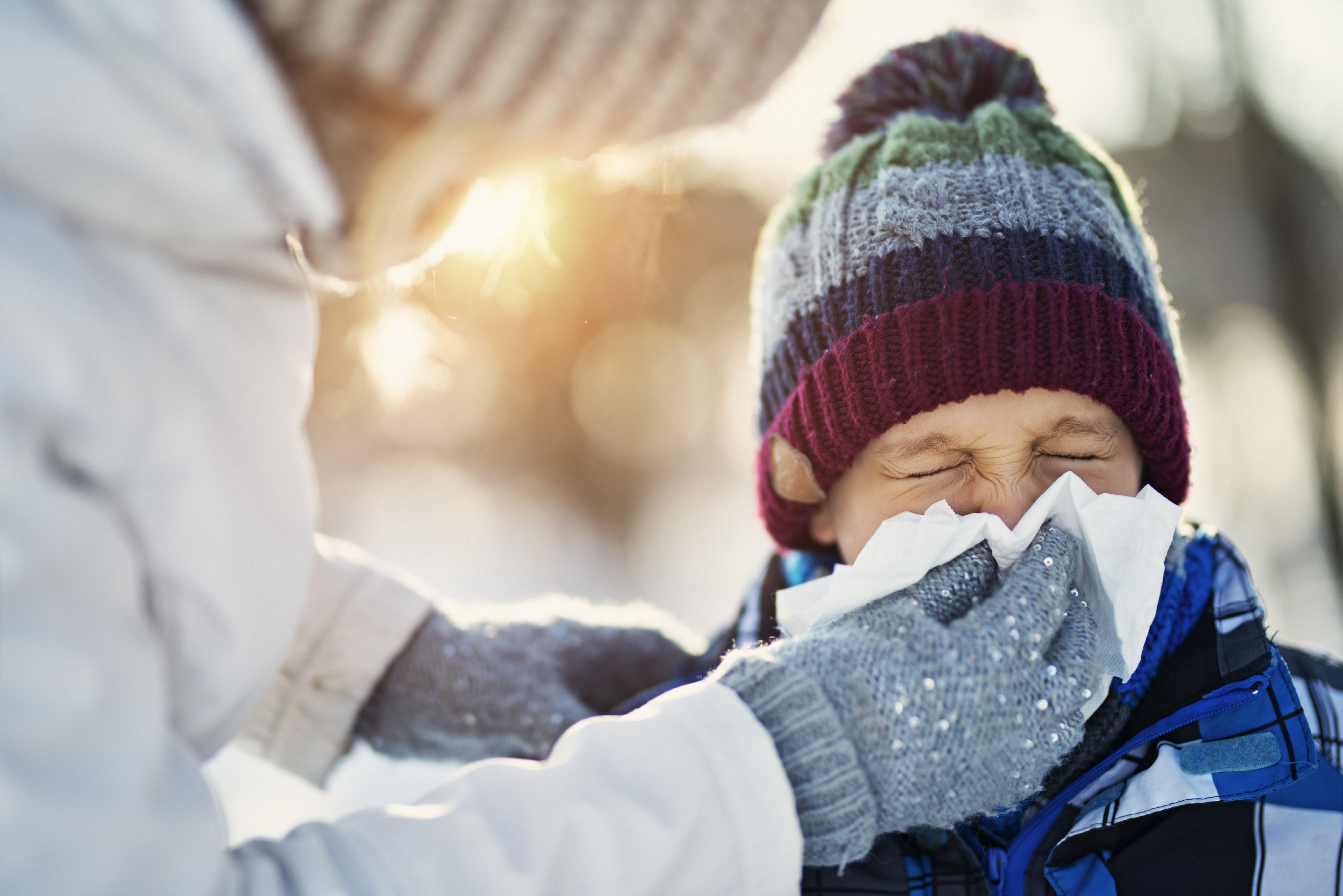
It's that time of year again—the leaves are falling, and the kids are beginning to cough and sniffle. Unfortunately, the return to school brings a greater risk of contracting the most common winter illnesses. Here's what to be on the lookout for.
The Common Cold
"By far, what we see more than anything is the common cold, which is caused by a virus infecting the upper respiratory system," says Dr. Johanna Kaufman of Summit Health's Pediatrics and Adolescent Medicine team. Many different viruses can cause it, but they have overlapping symptoms, including congestion, a runny nose, and a cough.
Viral Gastroenteritis
"This is often called the stomach flu," says Dr. Stewart Glickman, another Summit Health pediatrician. "But it's not at all caused by the influenza virus." Flu virus causes respiratory infections while different viruses attack the intestines causing the typical symptoms of viral gastroenteritis—fever, nausea, vomiting and diarrhea.
Influenza
The symptoms of the flu are often comparable to that of viral gastroenteritis—fever, vomiting, diarrhea, body aches, and upper respiratory issues. "There are typically two types of the virus that cause the seasonal flu," notes Dr. Kaufman. "Influenza A and influenza B." Each year, public health officials redevelop the vaccine based on their predictions of the most impactful strains that year. "This variant is why it's important to get the flu shot every year," says Dr. Kaufman.
Respiratory Syncytial Virus (RSV)
“RSV usually produces cold-like symptoms,” says Dr. Glickman. It can also cause bronchiolitis, however, which is inflammation and congestion of small airways that makes it difficult to pass air to the lungs. RSV can even lead to pneumonia, affecting the air sacs in the lower airway from where oxygen is passed to the blood and carried to the rest of the body. Both Dr. Glickman and Dr. Kaufman note that these are things that are especially important to watch out for in infants and children under 2 years old.
Croup
A result of a viral infection to the upper airway, "croup presents itself with a barking cough," says Dr. Kaufman. "If it gets very bad, it presents with something called stridor, which is high-pitched noise." These symptoms are the result of swelling around the voice box, windpipe, and bronchial tubes.
Strep Throat
Strep throat is an infection caused by bacteria. "It's very contagious and especially transmissible in the winter as kids are close together indoors," notes Dr. Glickman. A sore throat, fever, painful swallowing, and swollen lymph nodes are all symptoms. "You can also have a headache, a stomachache, and a rash tends to develop in older children," adds Dr. Kaufman.
How Do I Protect My Kids?
The list above might feel overwhelming, especially with the ongoing risk for COVID-19. While the number of children getting sick decreased last year due to stay-at-home orders, social distancing, and mask requirements, Dr. Glickman says it's important to be vigilant. "Kids are back to being with other kids and having fun, and the viruses are taking notice."
Continue ensuring your kids stay safe and healthy by:
- Making sure they wash their hands
- Teaching them to cough into their elbow instead of their hand
- Keeping them home when they feel sick
- Getting them the flu shot, as well as all other childhood vaccines
- Getting them vaccinated against COVID-19 if they are 5 years or older
